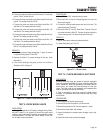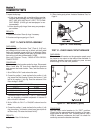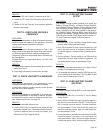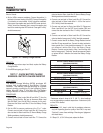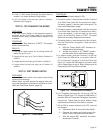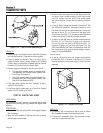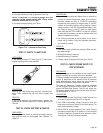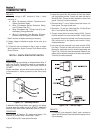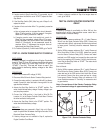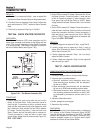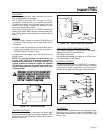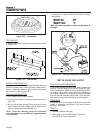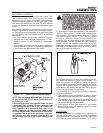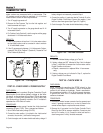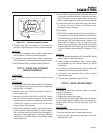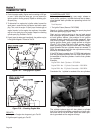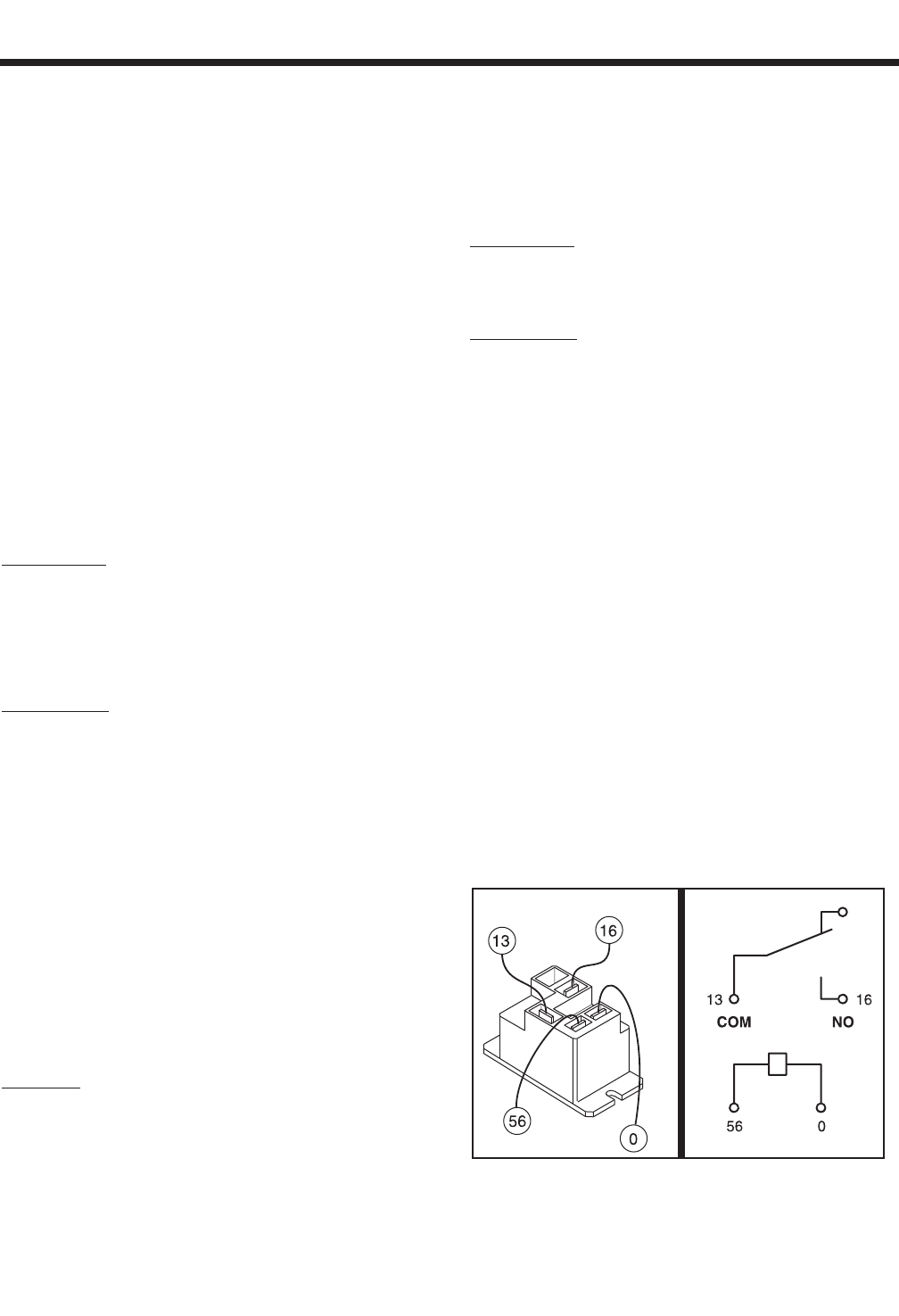
SSeeccttiioonn 77
DDIIAAGGNNOOSSTTIICC TTEESSTTSS
2. If engine cranks in Step 3 when Wire 17 is grounded, but will
not crank when the Switch is set to “START”, replace the Start-
Stop Switch.
3. If the Start-Stop Switch (SW1) failed any part of Steps 5 or 6,
replace the switch.
4. If engine will not crank when Wire 17 is grounded, proceed as
follows:
a.Use a jumper wire to connect the circuit board's
Wire 17 (pin location J1-6) to ground. If engine
does NOT crank, proceed to Test 25.
b.If engine cranks now, but would not crank in
Step 3 of the procedure, check Wire 17 for con-
tinuity between the circuit board and Start-Stop
Switch. If “Continuity” is not measured, repair or
replace Wire 17 between the engine control
board and the Start-Stop Switch.
5. For Problem 9 (Section 6), if switch tests GOOD, go to Test 30.
TEST 25 - CHECK POWER SUPPLY TO WIRE 56
DISCUSSION:
If battery voltage is available to the Engine Controller
board in Test 23, then DC voltage should be delivered
to Wire 56 when the Start-Stop Switch is set to
“START” (Test 24). This test will check to see if the
circuit board is delivering battery voltage to the Wire
56 terminal.
PROCEDURE:
1. Set a VOM to measure DC voltage (12 VDC).
2. Disconnect Wire 56 from its Starter Contactor Relay terminal.
3. Connect the meter positive (+) test lead to Wire 56, just discon-
nected. Connect the other test lead to frame ground. No volt-
age should be indicated.
4. Actuate the Start-Stop Switch to its “START” position. The
meter should indicate battery voltage. If battery voltage is pre-
sent, stop the procedure.
5. Connect the VOM positive (+) test lead to Wire 56 (Pin
Location J1-1) at the Engine Controller Circuit Board. Connect
the other test lead to frame ground.
6. Actuate the Start-Stop Switch to the “START” position. The
meter should indicate battery voltage.
RESULTS:
1. If battery voltage was measured in Step 6, but not in Step 4,
repair or replace Wire 56 between the Engine Controller Circuit
Board and Starter Contactor Relay.
2. If battery voltage was not available in Step 6, replace the
Engine Controller Circuit Board.
3. If battery voltage is available in Step 4 but engine does not
crank, go to Test 26.
TEST 26- CHECK STARTER CONTACTOR
RELAY
DISCUSSION:
If battery voltage is available to Wire 56 but the
engine won't crank, the possible cause could be a
failed Starter Contactor Relay.
PROCEDURE:
1. Set the VOM to measure resistance (“R x 1” scale). Remove
Wire 0 from the Starter Contactor Relay (SCR). Connect one
meter test lead to Wire 0, and connect the other meter test lead
to frame ground.
“
Continuity” should be measured. Reconnect
Wire 0.
2. Set the VOM to measure resistance (“R x 1” scale). Disconnect
Wire 16 and Wire 13 (Wire 13 is 12VDC isolate from ground)
from the Starter Contactor Relay (SCR). Connect one meter
test lead to an SCR terminal, and connect the other meter test
lead to the remaining SCR terminal. “Infinity” should be mea-
sured. Set the Start-Stop Switch to “START”. The meter should
now read “Continuity”.
Short to Ground:
3. Set the VOM to measure resistance (“R x 1” scale). Disconnect
Wire 56 from the Starter Contactor Relay (SCR). Connect one
meter test lead to the SCR terminal from which Wire 56 was
just removed. Connect the other meter test lead to a clean
frame ground. Starter Contactor Relay coil resistance of 155
ohms should be measured. If
“
Continuity” is measured a short
to ground exists.
Note: Current draw of the Starter Contactor Relay
coil at nominal voltage is approximately 80ma.
Figure 7-19. – Starter Contactor Relay
Page 51



